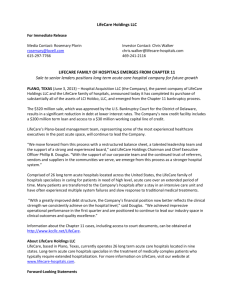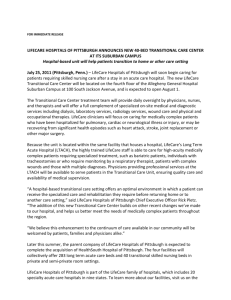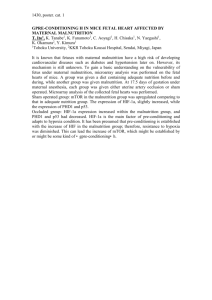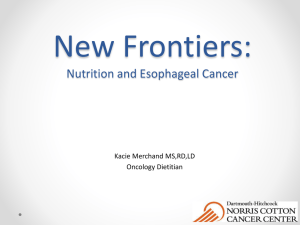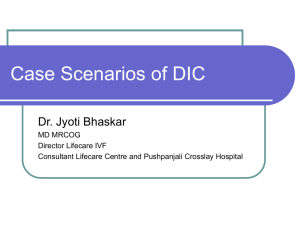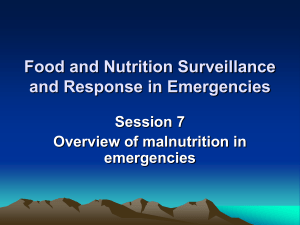Life Care Physician - Volume 1, Issue 2, Q2 2013
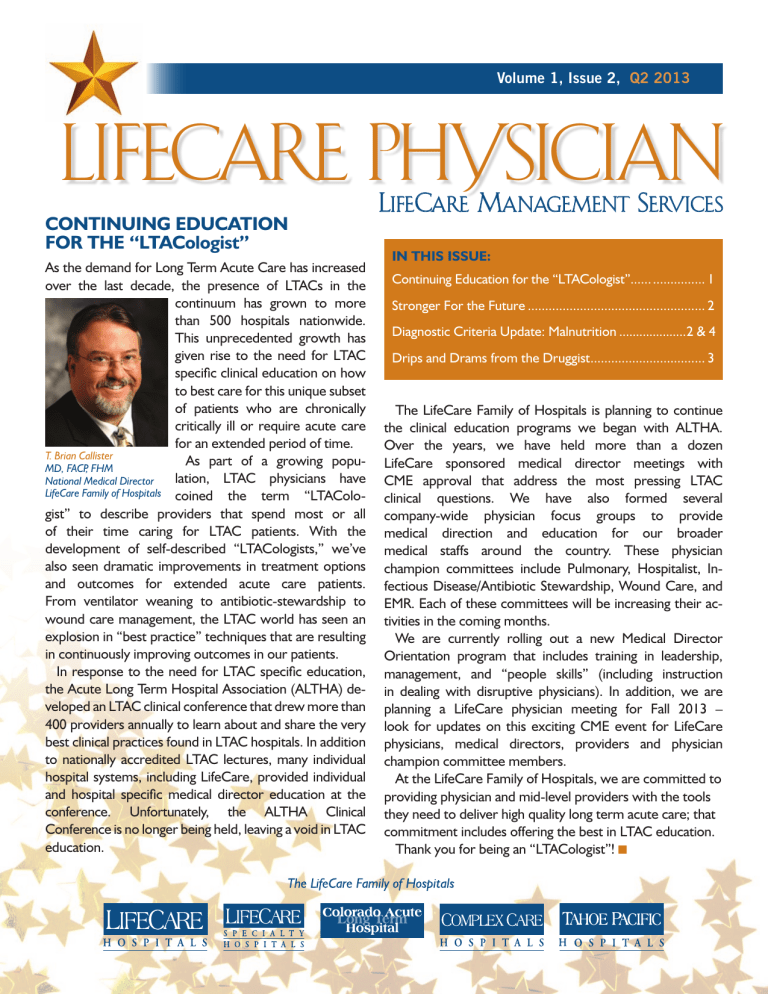
Volume 1, Issue 2,
Q2 2013
LifeCare PhysiCian
LifeCare Management services
ContInuIng eduCatIon for the “LtaCologist”
In thIs Issue:
As the demand for Long Term Acute Care has increased over the last decade, the presence of LTACs in the continuum has grown to more than 500 hospitals nationwide.
This unprecedented growth has given rise to the need for LTAC specific clinical education on how to best care for this unique subset of patients who are chronically critically ill or require acute care for an extended period of time.
As part of a growing popu-
T. Brian Callister
MD, FACP, FHM
National Medical Director
LifeCare Family of Hospitals lation, LTAC physicians have coined the term “LTACologist” to describe providers that spend most or all of their time caring for LTAC patients. With the development of self-described “LTACologists,” we’ve also seen dramatic improvements in treatment options and outcomes for extended acute care patients.
From ventilator weaning to antibiotic-stewardship to wound care management, the LTAC world has seen an explosion in “best practice” techniques that are resulting in continuously improving outcomes in our patients.
In response to the need for LTAC specific education, the Acute Long Term Hospital Association (ALTHA) developed an LTAC clinical conference that drew more than
400 providers annually to learn about and share the very best clinical practices found in LTAC hospitals. In addition to nationally accredited LTAC lectures, many individual hospital systems, including LifeCare, provided individual and hospital specific medical director education at the conference. Unfortunately, the ALTHA Clinical
Conference is no longer being held, leaving a void in LTAC education.
Continuing Education for the “LTACologist”...... ............... 1
Stronger For the Future ................................................... 2
Diagnostic Criteria Update: Malnutrition ....................2 & 4
Drips and Drams from the Druggist ................................. 3
The LifeCare Family of Hospitals is planning to continue the clinical education programs we began with ALTHA.
Over the years, we have held more than a dozen
LifeCare sponsored medical director meetings with
CME approval that address the most pressing LTAC clinical questions. We have also formed several company-wide physician focus groups to provide medical direction and education for our broader medical staffs around the country. These physician champion committees include Pulmonary, Hospitalist, Infectious Disease/Antibiotic Stewardship, Wound Care, and
EMR. Each of these committees will be increasing their activities in the coming months.
We are currently rolling out a new Medical Director
Orientation program that includes training in leadership, management, and “people skills” (including instruction in dealing with disruptive physicians). In addition, we are planning a LifeCare physician meeting for Fall 2013 – look for updates on this exciting CME event for LifeCare physicians, medical directors, providers and physician champion committee members.
At the LifeCare Family of Hospitals, we are committed to providing physician and mid-level providers with the tools they need to deliver high quality long term acute care; that commitment includes offering the best in LTAC education.
Thank you for being an “LTACologist”! n
Page 2,
Q2 2013
stronger for the future
As physicians caring for patients in the LifeCare Family of
Hospitals, I am hopeful you have felt informed and updated as our company has navigated its way through a Chapter
11 restructuring. We’ve done our best to keep all our stakeholders – medical staff members, employees, payors, patients and family members – abreast of our progress and aware of our goals.
Even as we’ve strived to keep you in informed, we hope that you have noticed little to no change in
Phillip B. Douglas
Chairman & Ceo
LifeCare Family of Hospitals our day-to-day operations. In an effort to ensure seamless continuity of care in our hospitals, one of our primary objectives has been to keep this process largely invisible for you and your patients. Our relationships with referring facilities, physicians and payors have continued as normal, as has our commitment to providing compassionate, high quality care to patients recovering from catastrophic illness or injury.
I’m pleased to report we are moving efficiently through the bankruptcy court and anticipate emerging from the process this summer. We will do so as a stronger company, well positioned for growth and future success.
Over the years, thanks in large part to your continued support and professional dedication, the LifeCare
Family of Hospitals has remained at the top of the LTAC hospital industry in regard to quality outcomes. With this restructuring of our corporate debt, our financial position will better reflect the clinical strength and success we’ve achieved and sustained over time.
As we move forward, I look forward to sharing announcements with you about new capital purchases, new strategic partnerships and other innovations to ensure our clinical teams can continue the aggressive, compassionate care for which our hospitals are regarded.
Until then, thank you for your continued support and for everything you for your patients.
n
dIagnostIC CrIterIa update:
MaLnutrItIon
By T. Brian Callister, MD, FACP, FHM
Malnutrition is a common co-morbidity in the chronically critically ill and medically complex patients cared for in the long term acute care setting. Traditionally, a measure of protein stores, typically using albumin and/or pre-albumin, and weight loss with marginal caloric intake, has been used to define protein malnutrition and cachexia or unspecified malnutrition respectively.
Recent clinical studies, however, have failed to validate the reliability of using such simple and straightforward measures to make a diagnosis of malnutrition. Adding to the confusion are recent reports of hospitals being fined for coding “kwashiorkor” or
“marasmus,” meant to describe different form of malnutrition in underdeveloped nations, as major co-morbidities (MCC).
Kwashiorkor, the protein wasting or “weaning syndrome” usually seen in third world countries, has been a significant issue in coding malnutrition. Many coders, when presented with low albumin or pre-albumin, would simply insert “kwashiorkor” as an MCC; the overly simplified definition of kwashiorkor in the ICD-9 codes seemed to fit. Accordingly, this MCC would significantly bump up reimbursement, often erroneously. In response to these problems, the Academy of Nutrition and Dietetics and the American Society for Parenteral and Enteral
Nutrition (ASPEN) have developed new guidelines for malnutrition coding.
The new clinical characteristics used to define a diagnosis of malnutrition include energy intake, weight loss, an assessment of body fat, muscle mass, and fluid accumulation as well as grip strength. According to the new guidelines, a minimum of two of these characteristic abnormalities are needed to make a diagnosis of malnutrition.
CoNTiNueD oN PAge 4
Page 3,
Q2 2013
3d: drIps
&
draMs froM the druggIst
By Steven Harris, PharmD
Director of Pharmacy
LifeCare Family of Hospitals
Over the past few years, the LifeCare Family of Hospitals has intensified its focus on medication management in ways that are both clearly visible and less obvious.
For instance, you may have noticed the installation of
Pyxis automated dispensing units at your hospital. These units help ensure that our pharmacists and medical teams are able to keep pace with technological advancements in medication distribution. You may have also seen extra waste bins around the hospital. We’ve partnered with
Stericycle to manage and dispose of the hazardous pharmaceutical waste produced in our facilities. This measure is not only a regulatory requirement, but the right thing to do as a healthcare provider partnering with the communities we serve.
Recently, the Centers for Disease Control (CDC) published an article in the New england Journal of Medicine that shines light on the overuse of antibiotics. The CDC estimate there were more than eight antibiotic estimates written for every 10 US citizens in 2010. As you are aware, our Antibiotic Stewardship Program has been in place for just over a year. Utilizing the expertise of infectious disease physicians, clinical pharmacists, infection prevention nurses and case management professionals, this program is vital to maintaining the efficacy of the antibiotics and antimicrobial agents we have available, as the pipeline in this country for new agents is relatively dry.
An additional effort that may not be as visible is the use of Quantifi at each of our affiliated hospitals. Qhantifi is a uniform pharmacist intervention documentation program that helps document the care physicians and pharmacists are providing to patients on a daily basis. We anticipate having information from this system in the near future to assist in measuring the impact of various ongoing clinical initiatives.
Finally, two important formulary changes have been made to ensure your patients have access to high quality, proven medications. Enoxaparin is now the low molecular weight heparin of choice and Aranesp ® (darbepoetin) is the erythtropoetic stimulating agent of choice. I’m sure your pharmacy leadership and staff have discussed these changes with you, but I wanted to reiterate LifeCare’s commitment to the provision of top quality pharmaceutical care. There is more clinical experience and evidence with enoxaparin than any other low molecular weight heparin, and darbepoetin will provide and an enhancement in the frequency of dosing while maintaining the efficacy we must demand. Ultimately, medication decisions are made by prescribing physicians, but we are pleased to offer these products as first choice pharmaceuticals.
Your director of pharmacy is interested in any feedback of questions your may have about these projects or initiatives; you can also feel free to contact me directly.
Thank you for your continued support of Pharmacy
Services at the LifeCare Family of Hospitals.
n
STARS
Specificity, Teamwork, Accountability,
Results, and Sustainability
These are the key components to LifeCare’s clinical resource management program focusing on the impact of documentation.
Page 4,
Q2 2013
dIagnostIC CrIterIa update:
MaLnutrItIon
CoNTiNueD FroM PAge 2
The categories of malnutrition have also been simplified to either “non-severe” (or “moderate”) or “severe.” As an example, weight loss of 5% over a month with <75% of estimated energy intake is considered moderate malnutrition in the context of chronic illness, though a weight loss of more than
5% is considered severe malnutrition. With acute injuries or illness, weight loss exceeding 2% over a week or more is considered “severe” malnutrition. In addition, a moderate loss of body fat or muscle mass as well as moderate anasarca (fluid accumulation) are also acceptable characteristics in defining severe protein malnutrition for coding purposes.
As complicated as these new clinical guidelines may seem, they are actually quite logical and easy to use.
Relying on straight forward clinical findings instead of laboratory values makes a great deal of sense when it comes to making a diagnosis of malnutrition. By improving the accuracy of our assessments, we can better reflect the true acuity of our patients.
n
We are building a company that cares for each patient’s body, mind and soul.
www.lifecare-hospitals.com
Mailing address
5340 Legacy Drive
The LifeCare Family of Hospitals
469.241.2100
Plano, T exas 75024
469.241.2199 Fax
Suite 150 - Building 4
